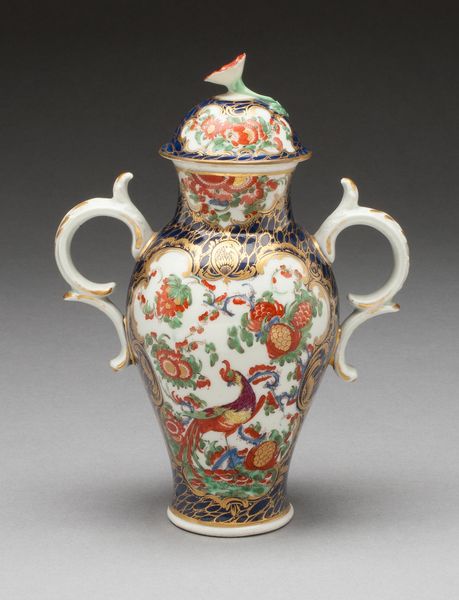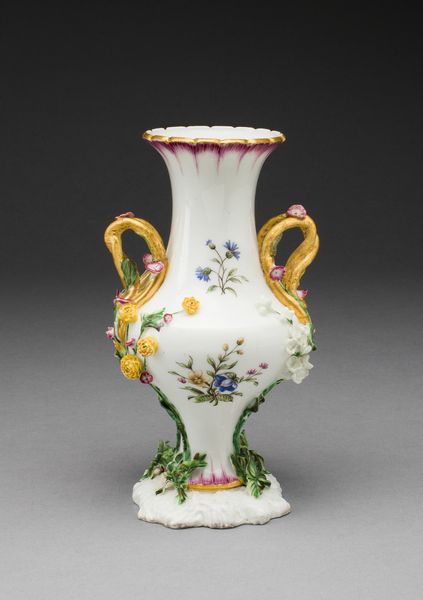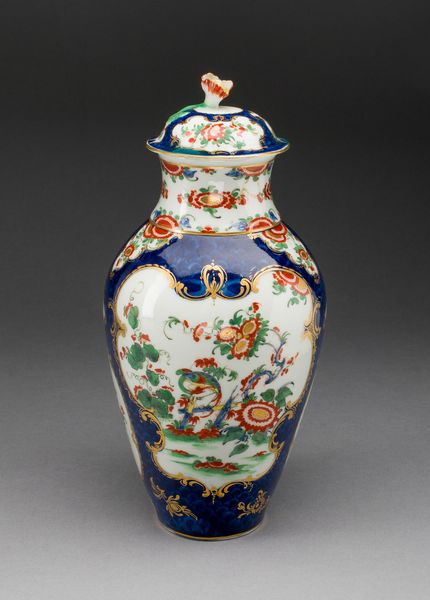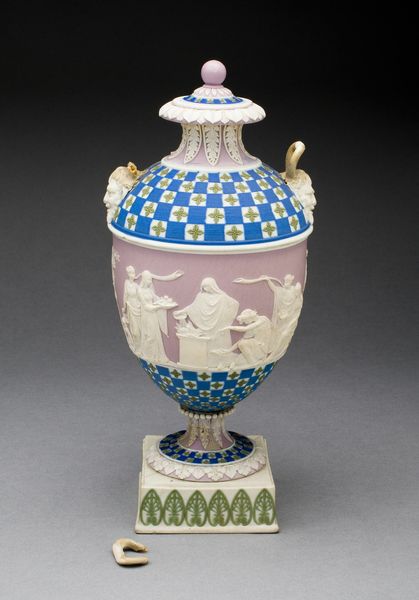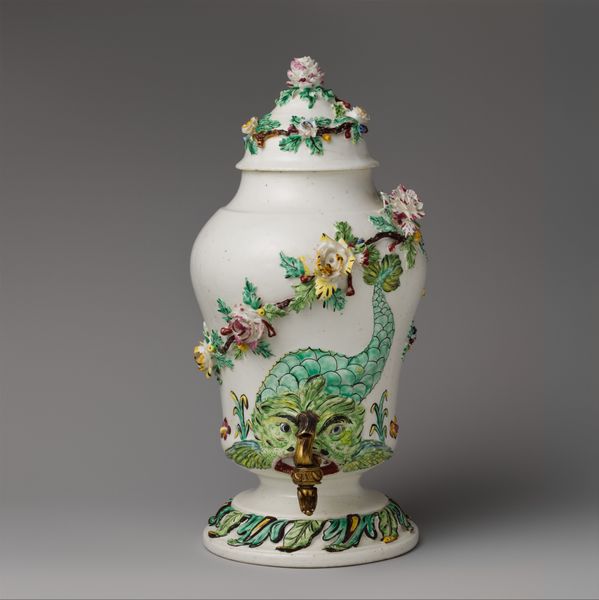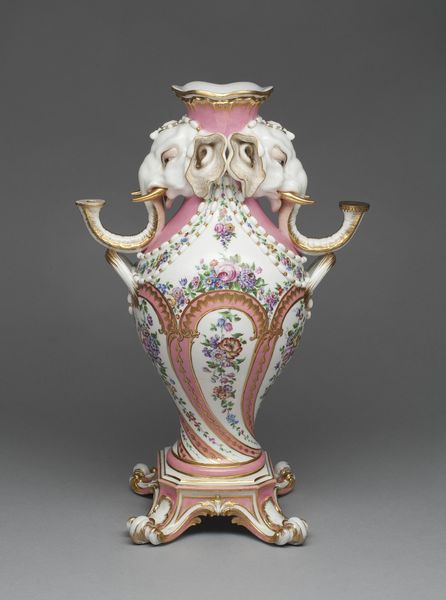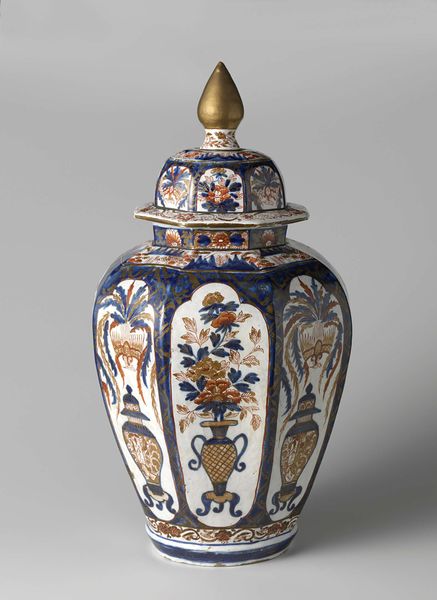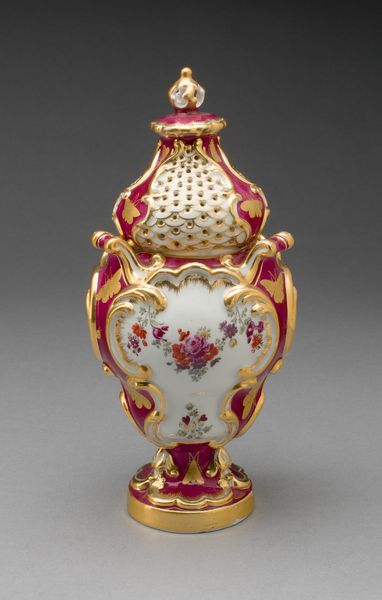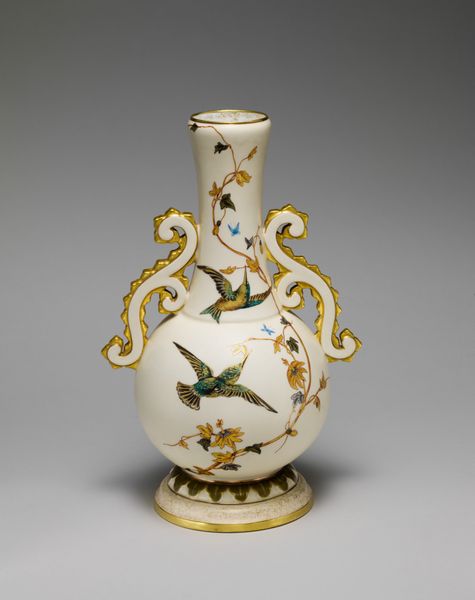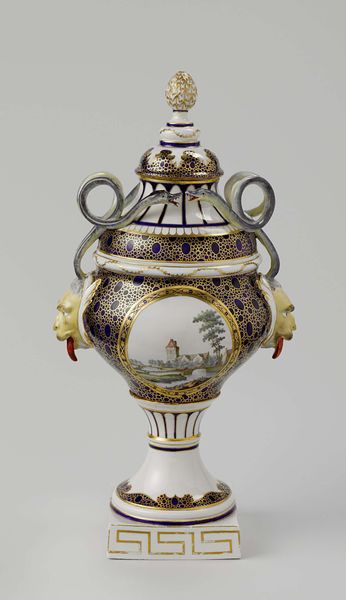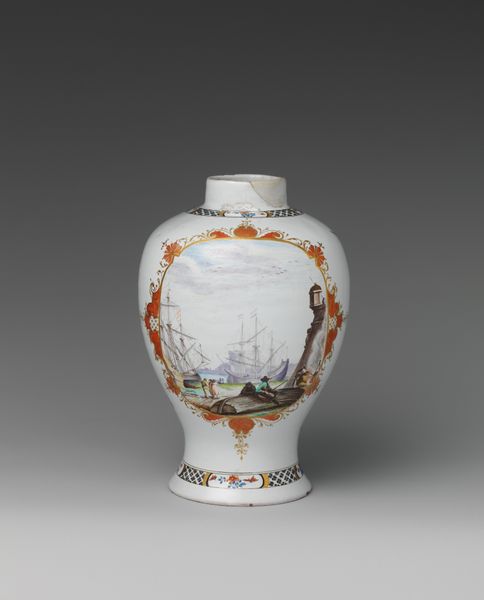
Octagonal vase with two handles, flowering plants and diaper pattern on a seperate stand c. 1700 - 1724
0:00
0:00
ceramic, porcelain, earthenware
#
asian-art
#
ceramic
#
porcelain
#
earthenware
#
geometric
#
ceramic
#
decorative-art
Dimensions: height 22.5 cm, diameter 10.5 cm
Copyright: Rijks Museum: Open Domain
Editor: Here we have an octagonal vase with two handles, rendered in porcelain and earthenware, sitting proudly on its own stand. The vase dates back to the early 18th century, and while its creator remains anonymous, it's currently held at the Rijksmuseum. It's wonderfully ornate, quite visually busy even, but the detail is captivating. How do you interpret this work, what does it communicate to you? Curator: I see this vase as a potent symbol of cultural exchange and, perhaps, colonial power dynamics. Think about it: the “diaper pattern” and flowering plants suggest an East Asian origin, meticulously crafted for likely a European market. This piece embodies the West's fascination with the East and the ways in which non-European artistry and craftsmanship were exoticized and commodified. The stand almost elevates it, not just physically but as an object of desire, a trophy if you will. Editor: That’s a really interesting perspective. I hadn’t considered the market for which it was made, but that obviously shaped its creation. I suppose I was focused on just appreciating the technical skill. Does the anonymous nature of the artist play into that dynamic, the kind of forced extraction and subsequent obliteration of specific makers in these colonial exchanges? Curator: Absolutely. Anonymity in this context is never neutral. It can be read as a systematic erasure of individual contributions within a globalized system that valued the end product far more than the person who created it. Consider also the potential power imbalance – the maker likely had little control over the vase’s ultimate destination or its perceived value. How does understanding this historical dimension change how you see the object? Editor: It definitely adds a layer of complexity. It shifts my perspective from just admiring its aesthetic appeal to thinking critically about its journey and the forces that shaped its creation and consumption. I feel a certain responsibility now to look more carefully. Curator: Precisely. The beauty remains, but it is now coupled with a richer, more ethically informed understanding. Art compels us to critically evaluate and, by doing so, perhaps imagine new narratives.
Comments
No comments
Be the first to comment and join the conversation on the ultimate creative platform.
